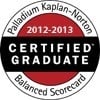Someone asks you a question at a party. It might be a friend, a family member, or a complete stranger. They look you in the eye and ask, "So, how much do you want to make this year?"
If you freeze up, you are not alone. Most of us answer with something vague like, "As much as possible." But what does that really mean? Answering the question "How Much do You Want to Make?" is not just about a dream number; it is about creating a road map for your success.
For more than 25 years in enterprise sales, I learned that vagueness gets you nowhere. You cannot build a sales plan, a business forecast, or a life on "as much as possible." You need a number, and this process will help you find yours.
Use Our Hubspot Inbound Marketing and Sales ROI Calculator to Find out the ROI you can Get From Using Hubspot Inbound Marketing and Sales Software.
Why "As Much As Possible" Doesn't Work
Imagine trying to build a house without a blueprint. You would have no idea how much lumber to buy. You would not know where the walls go or how big the rooms should be.
Your income goal is your financial blueprint. Without a specific target, you cannot create a plan to get there. You are just throwing things at the wall and hoping something sticks, which is a poor approach to business development.
This ambiguity also has a psychological cost. When the goal is "more," you never feel a sense of accomplishment. Having a concrete number for your revenue targets allows you to celebrate milestones and track real progress.
In high-value enterprise software sales, which is where I built my career, guessing is not an option. Selling complex SAP solutions to large companies means every move is calculated. Your revenue target dictates your entire sales strategy.
Start With Your Personal Bottom Line
Before you can figure out your business target, you need to understand your personal one. Your income is not just a number on a spreadsheet. It funds your life, your dreams, and your family's well-being, pushing you toward financial freedom.
So, get out a piece of paper or open a spreadsheet for some detailed income planning. List every single one of your monthly personal expenses. This includes your mortgage or rent, car payments, groceries, utilities, and insurance.
Do not forget to add categories for savings, retirement contributions, and even fun money. Include debt payments like student loans and credit cards, plus all those recurring subscriptions. Research from organizations like the Economic Policy Institute shows just how much it costs for families to maintain a modest standard of living. This number is your floor; it is the absolute minimum you need to get by.
How Much Do You Want to Make? A Step-by-Step Guide

Once you have your personal baseline, you can start building your actual income goal. This is not about survival; this is about success. We will work backward from your desired outcome to find the daily actions you need to take.
This is the exact process I used to plan my quotas in enterprise sales. It is the same process I teach my clients using .
Step 1: Define Your Target Annual Income
Look at your personal baseline number. Now, think about what you truly want for your financial goals. Do you want to pay off debt, save for a down payment on a house, or invest more aggressively?
Add those goals to your baseline. Then, add a buffer for taxes and business reinvestment. This becomes your gross annual income target, a critical part of your financial planning. It should be a specific number that excites and challenges you.
Step 2: Calculate Your Average Deal Size
To hit your target, you need to know what each sale is worth. Look back at your sales from the last year or two. What was the average revenue from each closed deal?
If you are new to sales or your business, you can use industry benchmarks as a starting point. Inside your Hubspot CRM, you can easily run a report to get this information. For me, deal sizes were often in the six or seven figures, but your number is specific to your business.
If your deal sizes vary greatly, consider creating a weighted average. You might also segment them into categories like small, medium, and large to get a clearer picture of your sales mix.
Step 3: Figure Out How Many Deals You Need
This is where the math gets simple and powerful. Divide your target annual income by your average deal size. The result is the number of deals you need to close in a year.
For example, if your goal is $300,000 and your average deal size is $15,000, you need to close 20 deals. Suddenly, your big annual goal seems much more manageable. You just need to find 20 customers to achieve your desired income.
Step 4: Reverse Engineer Your Sales Funnel
Closing 20 deals does not mean you only talk to 20 prospects. This is where your sales pipeline and conversion rates come into play. You need to know your numbers at each stage.
How many proposals do you send to close one deal? How many discovery calls does it take to get to a proposal? And how many initial leads do you need to get a discovery call? According to
Let's continue the example. If you close 25% of your proposals, you will need to send 80 proposals to close those 20 deals. Work all the way back to the top of the funnel. This tells you exactly how much activity you need to generate each month and week.
| Metric | Conversion Rate | Activity Needed |
|---|---|---|
| Closed Deals Needed | - | 20 |
| Proposals Sent | 25% Proposal-to-Close | 80 |
| Discovery Calls Held | 50% Discovery-to-Proposal | 160 |
| Leads Generated | 10% Lead-to-Discovery | 1,600 |
Using the Right Tools to Hit Your Number
A plan is useless without the tools to execute it. In sales, your process is everything. The right technology keeps you on track and makes your goal achievable.
A good CRM like Hubspot is not negotiable. It is the central nervous system of your sales operation. It tracks every lead, conversation, and deal, giving you the real-time data you need to know if you are on track with quota attainment.
Tools that help you configure, price, and quote (CPQ) are also game-changers. I have helped dozens of clients implement both Hubspot CPQ and other quoting tools like Pandadoc. A faster, more professional quote can significantly shorten your sales cycle and help you close deals more efficiently.
Finally, you need a system for lead generation. I became a specialist in LinkedIn Ads because it gives a predictable way to fill the top of the funnel. Consistent lead generation is the fuel that makes your entire sales engine run and affects your commission structure directly.
A Quick Story About Planning and Payoff
Early in my career, I was staring down a massive annual quota. It felt impossible. Instead of panicking, I broke it down using the same method I just showed you.
I realized I did not need hundreds of small deals. I needed two, maybe three, massive enterprise deals to hit my number for the entire year. My focus shifted instantly.
I used an Account-Based Marketing strategy to map out every single decision-maker at a huge potential client. I customized every email and every phone call. I spent months building relationships and showing value, all based on a mathematical plan. It paid off with my first six-figure commission check, which was more money than I had ever seen at one time.
That check was not a result of luck. It was the result of a plan that started with a clear answer to a tough question.
Key Lessons for Setting Your Income Goals

Over the years, I have distilled this process into a few core principles. These are lessons learned from my books, "Solving Your Growth and Revenue Problem" and "KNOWING WHAT YOU SELL". They apply whether you are a solo entrepreneur or leading a huge sales team:
- Specificity is your superpower. Vague goals produce vague results. When you name your exact number, your brain starts to look for ways to make it happen, focusing your attention on relevant opportunities.
- Write it down. A goal that is not written down is just a wish. A study from Dominican University of California confirmed that you are more likely to achieve your goals if you write them down. This act makes your intention concrete.
- Stay grounded in reality. Your goal should stretch you, not break you. Use your own past data or reliable industry benchmarks to set an ambitious but achievable target. An impossible goal leads to burnout, not motivation.
- Let your goal guide your actions. A $50,000 goal needs a very different set of activities than a $5,000,000 goal. Your target income dictates the scale and type of prospecting and sales activities you should perform daily.
- Trust your tools, not your gut. Your CRM has the data. Use it to make informed decisions about your sales activities, pipeline health, and where to focus your efforts. Data reveals truths that feelings can hide.
- Break it down into smaller pieces. An annual goal is intimidating. A weekly goal of three discovery calls is something you can do. Breaking it down into monthly, weekly, and even daily targets makes the process manageable.
- Remember it is a math problem. While sales skill is important, hitting your target is often just about executing the right amount of activity. Control your inputs—the calls, emails, and meetings—and the outputs will follow.
- Plan for taxes and expenses. The number on the contract is not what you deposit in the bank. Always calculate your goal based on gross revenue and factor in taxes, business costs, and other deductions.
- Be persistent about the goal, but flexible on the plan. Market conditions can change. You might need to adjust your tactics, but your commitment to the target should not waver. Regularly review your plan and adapt as needed.
- Find an accountability partner. Share your goal with a trusted mentor or colleague. The simple act of saying it out loud makes you more likely to follow through and provides a support system when you face challenges.
Conclusion
The next time someone asks you that uncomfortable question, you will have a better answer. Deciding how much do you want to make is the first, most important step in taking control of your financial destiny. It transforms your career from a series of random events into a deliberate journey.
It is not about dreaming of a number. It is about doing the math. When you build a plan by reverse-engineering your goals, your target income becomes an inevitable outcome of a process you control.
We are a full-service Hubspot Certified Inbound Marketing and Sales Agency. In addition, we work to integrate your SAP System with Hubspot and Salesforce, where we have a deep delivery capability based on years of experience. Please our book a meeting service to get started.




